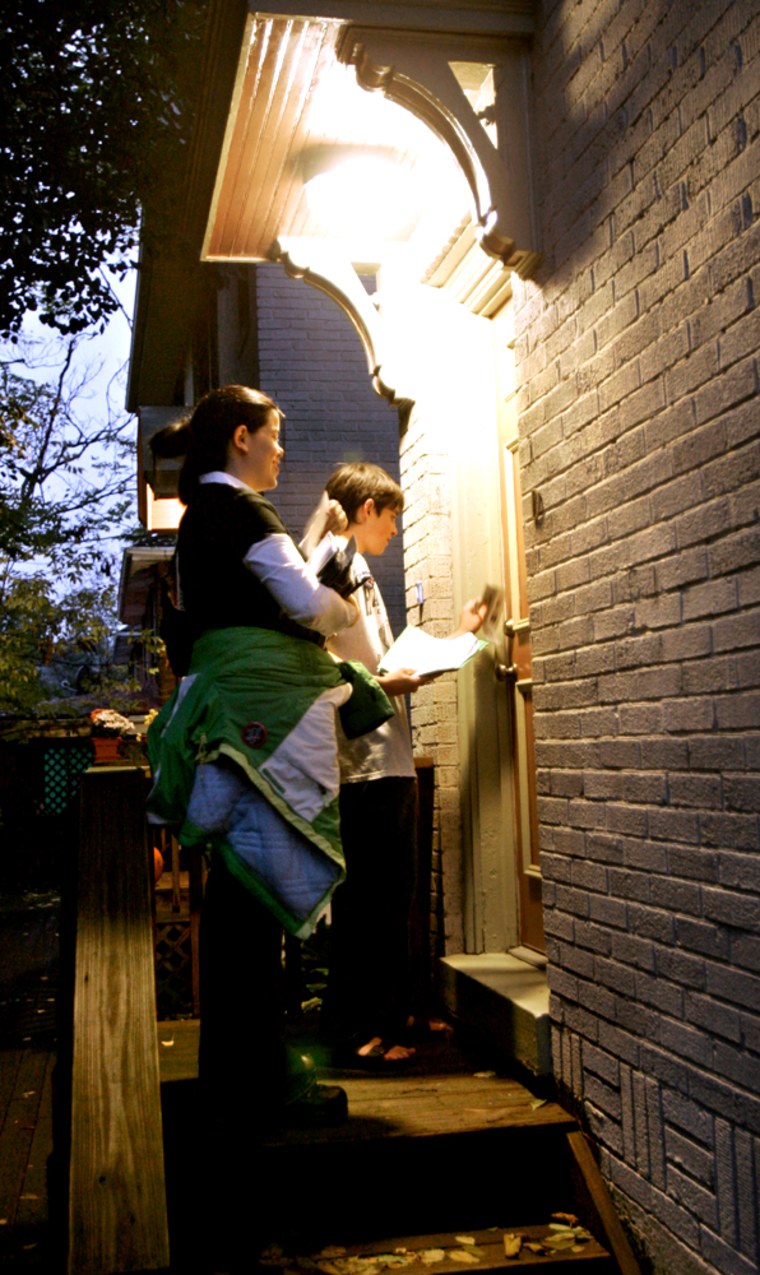A new round of MSNBC/Knight Ridder polling in five battleground states that President Bush carried four years ago shows the president with the upper hand in West Virginia, Missouri, and Colorado over his Democratic challenger John Kerry, and very slim leads in Ohio and New Hampshire.
And another survey in Nevada found Bush with a strong 10-point lead over Kerry.
The poll results are somewhat heartening for Bush, but Ohio, with 20 electoral votes, remains a potentially fatal problem for the president’s re-election hopes.
The Ohio poll found Bush clinging to a statistically insignificant lead over Kerry in the Buckeye State, 46 percent to 45 percent, with a large number of respondents, eight percent, saying they were still undecided.
The MSNBC/Knight Ridder surveys, conducted by Mason-Dixon Polling & Research, interviewed 625 likely voters in each state. The polls had a margin of error of four percentage points.
All-out effort for Ohio
Ohio has for the past six months been the focus of saturation advertising, candidate visits, and intense get-out-the-vote efforts by both parties.
Kerry is scheduled to campaign in Ohio on Thursday while Bush will return there Friday.
Bush carried the state by more than 165,000 votes, or 3.5 percent in 2000.
But this year, unlike four years ago, Ralph Nader will not be on the ballot in Ohio. Nader garnered 2.5 percent of the vote in Ohio in 2000.
Winning the presidency requires at least 270 electoral votes. If Bush wins the very same states he won four years ago, he’ll have 278 electoral votes.
At this stage, the most likely Bush 2000 states for Kerry to pry away are Ohio, Florida and New Hampshire.
If Bush were to lose both Ohio and Florida, it is hard to envision an electoral vote scenario in which he'd win a second term.
Until a few weeks ago, Kerry had targeted West Virginia and Nevada, which together have 10 electoral votes.
But West Virginia now seems to have fallen off the Kerry target list, as he hones his effort in Ohio, Pennsylvania, Florida and the upper Midwest trio of Iowa, Wisconsin and Minnesota.
Kerry's Nevada hopes
Kerry is making a campaign stop in Nevada on Friday, where another Mason-Dixon poll showed him trailing with 42 percent to Bush’s 52 percent and four percent undecided.
Seeking to drive up turnout by low-income voters, Democratic activists in Nevada and Florida over the next two weeks will be emphasizing state ballot initiatives to raise each state’s minimum wage to $6.15 an hour and to peg it to the inflation rate.
The new MSNBC/Knight Ridder polling indicates that Bush has a statistically insignificant lead of three points in New Hampshire, a state where other recent polls have shown him behind.
Bush carried the Granite State in 2000 with an edge of 7,211 votes.
In Colorado, a state Bush carried by 145,000 votes in 2000, the MSNBC/Knight Ridder poll showed the president holding a six-point lead, 49 percent to 43 percent, with Nader getting one percent and six percent undecided.
Kerry is scheduled to campaign in Colorado on Friday, with a stop in Pueblo County, a county that has gone Democratic in past elections with nearly 60 percent of the vote.
In the 2000 presidential election, Al Gore slightly under-performed Bill Clinton and other Democratic candidates in Pueblo County, winning only 54 percent, or 28,888 votes. If Kerry pushes that total to 30,000, it will help him in his bid to pull Colorado away from Bush.
At this point the election presents likenesses to previous presidential contests: One is a 1980 scenario where the challenger at the very end of the race soothes voters’ doubts about him and rides a wave of desire for change to victory.
The other is a 1948 model where the underestimated incumbent mobilizes his core supporters and wins.
